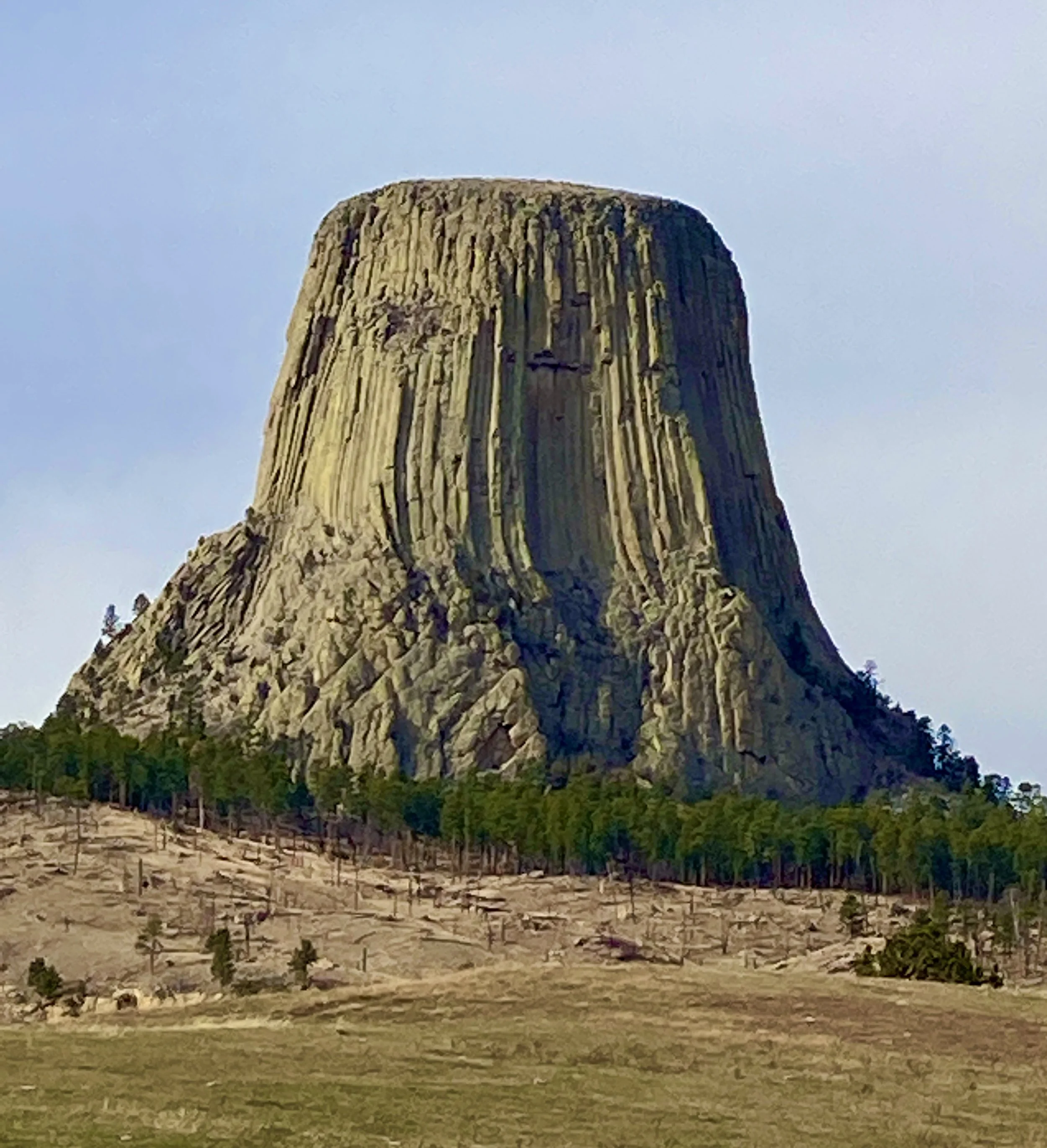Remembering Close Encounters
45 years later, Close Encounters of the Third Kind still entertains and thrills audiences. It’s a sci-fi classic with an epic, landmark location that audiences never forget. Steven Spielberg’s choice of Devils Tower for the finale of Close Encounters of the Third Kind remains one of modern cinema’s biggest, mind-blowing final reel moments.
It’s been 45 years since Spielberg’s blockbuster Close Encounters of the Third Kind hit the big screen in 1977.
Face it, ever since the UFO hysteria was unleashed following the Roswell incident back in 1947 the interest in flying saucers and space aliens has never diminished.
It has sparked our collective imagination. Are we alone in this endlessly vast universe? Or does otherworldly intelligence exist? And, if so, what would it be like if we ever encountered them?
The question has flashed through the minds of everyone who has ever peered into the twinkling night sky and felt that overwhelming sense of awe and wonder.
Hollywood wasted no time in offering up possible scenarios. In Howard Hawk’s The Thing from Another World (1951) the interplanetary traveler is a terrifying monster. In Robert Wise’s The Day The Earth Stood Still (1951) he is an emissary with a dire warning, and a nine-foot robot companion whose mission is to maintain global peace. The Earth and its nations can either grow up and discard their nuclear weapons or be reduced to a burned out cinder. You could argue that Gort—the name of the robot—was the original Robocop.
In addition to these classic films, there have been a steady stream of flying saucer films over the years. Many of the early ones were low-budget, drive-in movie fare, featuring actors in pathetic rubber costumes chasing scantily clad women. They have ranged from flat-out comedy (Earth Girls Are Easy, 1988) to splashy, big-budget, effects-driven spectacles like Independence Day, 1996.
Rarely had the topic been treated very seriously. That is, until Steven Spielberg made Close Encounters of the Third Kind.
It was a masterful mix of reality and fantasy—a blend of all the sightings and rumors and speculation that had accumulated over the years, with a sprinkling of pure imagination and state of the art Hollywood special effects.
At last, UFOlogists had a movie they could call their own. Spielberg, the consummate storyteller, opens the film with a tantalizing moment in an air traffic control room in which something totally mysterious streaks across the radar screens, verified by airline pilots who can’t believe what they just witnessed.
Close Encounters weaves together tantalizing folklore and documented, unexplained accounts of UFOs with unsolved pop culture mysteries like all those planes and ships that disappeared in the infamous Bermuda Triangle. He cobbles together the argument that something is out there, something that we have never been able to account for.
And so, when strange things start happening to the main characters in the film, we’re all in. They are not just crackpots (though they are treated as such, as they always are in movies like this), they are a selected few being invited to witness the greatest moment in the history of mankind—our mind-blowing encounter with beings from another world.
Close Encounters is a hugely successful film, one that is delightfully entertaining in a style that has become Steven Spielberg’s trademark. It stands the test of time.
Part of the success of this film is, of course, the setting. I’m speaking of Devils Tower, Wyoming. It’s the iconic, one-of-a-kind natural setting that cannot be mistaken for any other place on this planet. It’s the place where the characters need to go. Collectively, they become obsessed and driven by some overwhelming mysterious psychological motivation that drives them there. But what is the obsession? They sketch it, they make sculptures of it with mashed potatoes and finally piles of wet mud. They know, and we know, that where they are being brainwashed and programmed to go is a wild place they can’t resist. But again, why?
Devil’s Tower, location of the climactic scene in Close Encounters (Photo by Chip Walter)
Devils Tower is a character in this film as much as any of the rest of the cast. It looms large, very literally. Its size is overwhelming and awe inspiring, until of course, the alien ship appears above it, completely and dramatically dwarfing it. It’s the OMG moment that a movie like this requires to knock you out of your seat.
Devils Tower is to Close Encounters what Mount Rushmore was to Hitchcock’s North by Northwest (1959). Spielberg was heavily influenced by Hitchcock, as his suspense-driven blockbuster film Jaws (1975) revealed. He knows what you can milk out of a famous, well-known location in the way of anticipation and thrills.
Interestingly, it was David Lean’s film Lawrence of Arabia (1962) that inspired Spielberg to become a filmmaker. Who can forget the famous cut early in the movie between the closeup of a match being ignited and the vastness of the desert in which men on camels appear to be tiny ants on a massive anthill?
For Spielberg, size matters. Scale matters. The choice of Devils Tower became the perfect choice because of it instant recognizability and its staggering size.
Its name should appear in the final credits along with the rest of the stars, and maybe it should have received a special Academy Award for a category called something like Natural Wonder in a Supporting Role.
It deserved it.



